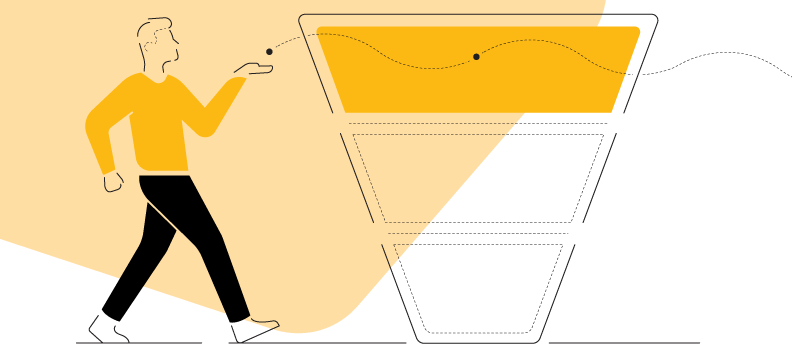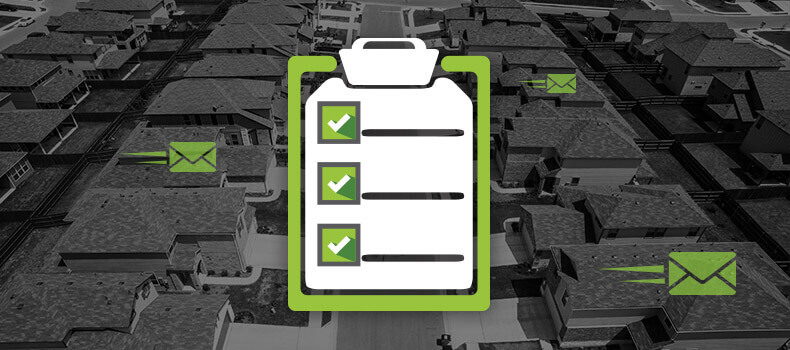Does This Sound Familiar?
You imagined the product or service you were selling would speak for itself. You thought your perfect customer would be magically drawn to you, and your product or service would sell out in hours.
Yet, reality often looks quite different.
Customers aren’t showing up—or at least, not nearly as many as you’d hoped. Even those who are showing up aren’t buying.
How can you target the right customer?
Defining your ideal customer is essential for business success. By understanding your target audience, you can tailor your products, services, and marketing efforts to meet their unique needs and preferences.
Many businesses cast too wide a net with their marketing, thinking that the more people they attract, the more likely they are to make a sale. When this happens, you may find casually interested customers, but most people you connect with won’t want or need your product. This can make you feel like you’re wasting time, money, effort, and you might want to give up.
Before you get discouraged, though, we want to offer this step-by-step guide to help you define your ideal customer, regardless of whether you are a B2B or B2C business. It’s written to give you an excellent foundation for moving forward with your marketing and for attracting the right prospects into your funnel.
Ready? Let’s get started!
Marketing Without a Target
Not everyone will be your target audience. Sure, you might aspire to a massive, diverse following like Apple or Coca-Cola, but those companies didn’t start with millions of fans. They began by focusing on a single ideal customer.
There is no one-size-fits-all message in marketing. The broader your audience, the more diluted your message becomes—and the less it resonates with those who see it.
If you’d like further proof of the risk you run by launching generic marketing campaigns, look no further than these recent statistics:
71% of consumers expect personalized interactions. 76% of consumers get frustrated when it doesn’t happen.
91% of consumers are more likely to shop with brands that recognize, remember, and provide relevant offers and recommendations.
Personalized emails deliver six times higher transaction rates compared to non-personalized emails.
77% of consumers have chosen, recommended, or paid more for a brand that provides a personalized service or experience.
61% of consumers are more likely to buy from companies that deliver customized content.
But there’s hope! Research by the Aberdeen Group shows that businesses that embrace targeted marketing strategies can experience a significant increase in sales opportunities, sometimes as high as 20%.
So, how is it done?
How do brands that carry positive global recognition get to that level?
You start small with buyer personas.
Why Defining Personas is Crucial
Understanding your ideal customer is a key step to business success. It allows you to tailor your products, services, and marketing efforts to resonate with those most likely to become your loyal followers. As our earlier statistics demonstrate, your customers demand personalization!
Buyer personas are fictional representations of your ideal customer, based on data and research. The most effective personas blend demographic and psychographic insights. They often include additional details like preferences, behaviors, pain points, and even purchasing patterns.
Why does your business need something like this to reach its sales goals?
Every successful business, large or small, understands its ideal customer through and through. This includes if they’re married, the type of job they hold, and whether they have kids or pets. The list goes on.
Creating personas is a lot more than demographics, though.
Buyer personas often explore more insightful aspects of human behavior, such as values, aspirations, hobbies, and personality traits. By understanding demographics and psychographics, businesses can better visualize their ideal customer.
Your ideal customer isn’t just someone who fits a certain age bracket or income level; they are individuals whose values, interests, and behaviors align just right with what you’re selling. Read on to learn how.
When you understand these intricacies, you feel empowered to create more targeted strategies that speak directly to the desires and motivations of your best prospects.
So, instead of casting a wide net and hoping for the best, defining your ideal customer enables you to cultivate meaningful connections and foster long-term relationships that drive sustainable growth.
Use the Digital Marketing Institute’s comprehensive guide to create your customer personas: The Beginner’s Guide to Defining Buyer Personas.

How to Uncover Your Ideal Customer
Now that you know why defining your target customer is crucial, let’s explore how to do it effectively.
Effective marketing isn’t random. Instead, it’s grounded in data analysis and thoughtful insights into customer behaviors and preferences.
We get it—data analysis isn’t always fun or interesting. However, all small business owners are tasked with wearing different hats and knowing a little bit about a lot of things, and that includes data-informed decision-making. No need to worry, though; we walk you through all of it below.
Here’s a step-by-step guide to uncovering your ideal customer:

Start with an Internal Audit
Begin your search by looking at all your existing data. Who is already engaging with your brand or buying from you? Who appears to be interested but hasn’t made a purchase yet?
Some examples of where you might find this type of information include:
- Sales records: Identify patterns in demographics, purchase behavior, and customer feedback.
- Website analytics: Use tools like Google Analytics or heat mapping to gain valuable insights into your customers’ and prospects’ behavior when they visit your website.
- Email list: Review your email open rates, click-throughs, and conversions to see where prospective interest in your products and services lies. What subject lines are attracting attention? Do hyperlinks or buttons get more clicks?
- Social media engagement metrics: Pay attention to likes, shares, comments, and click-throughs to uncover audience preferences. Pay attention to patterns such as what type of posts get the most engagement, the time of day and day of the week those posts go out, and who is most engaged.
By examining who is already drawn to your offerings and why, you can determine valuable insights about the characteristics and preferences of your ideal clients.

Listen to Your Customers
Sometimes checking review sites or the comment sections on your website or social media can feel overwhelming. But both positive and negative feedback can give you insight into your ideal customer, as well as their expectations and how you can connect with them!
Additionally, customer surveys and interviews can help you to gather deeper insights into their needs, preferences, and pain points. That said, take your time with these types of asks. You’ll want to craft thoughtful questions that address their motivations and aspirations and force them to think more deeply about their responses. This gives you clearer insights into how to market to prospects.
For example, instead of, “Why did you buy from COMPANY NAME?” which is very general and can bring in a whole host of responses, you might ask a series of questions that allude to the topic, such as:
“How did you find us?”
“What product or service were you looking for?”
“What product(s) or service(s) did you ultimately purchase?”
“What are three things that convinced you to buy from us?”
Be attentive when reviewing their responses. By actively listening to your customers, you can uncover valuable information that will help to guide your marketing strategies.

Know Your Competition
Yes, they’re out there. Understanding your competitors can save you significant time, as their ideal customer might resemble yours! Here’s why: embracing them can offer your business valuable insights and untapped market opportunities. Here are some ways to get to know your competition better:
- Follow them on social media
- Sign up for their email list
- Download their free offerings
- Jump into their live workshops
- Consume their video content
- Read their blog
- Analyze their advertisements
Any avenue that gives you insight into how your competitors market (and who they market to) should be studied closely.
You can also use free resources like the article “A Step-by-Step Guide to Competitive Market Analysis” by Zapier to refine your understanding of the competitive landscape and carve out your niche.

Embrace Market Research (on a Budget)
Let’s face it—small businesses often operate on tight budgets. You don’t always have a lot of money to invest in research to define your ideal customer.
Fortunately, market research doesn’t have to cost anything at all! There are hundreds of accessible and affordable tools to help you get started. Some of our favorites are:
- Google Trends: Explore trending topics and search queries.
- SurveyMonkey: Use the free basic plan to collect customer feedback through surveys.
- Quora and Reddit: Browse questions and answers on this platform to learn about customer concerns, interests, and challenges.
- Industry whitepapers: Access reports and insights from organizations like Pew Research and Forrester that often publish free or low-cost reports on trends, customer behavior, and marketing insights.
- Publicly available sources: Leverage publicly available data from the U.S. Census Bureau on demographics, economic behavior, and spending patterns for targeted market research. Find data from the Bureau of Labor Statistics on employment trends, industries, and economic behavior to inform your customer profiles.
These resources (and more) provide valuable market intelligence that can inform your target market definition and strategic decision-making.

Refine and Iterate
You’re never going to have all the answers. Small business owners need to be willing to adapt to changes in customer behaviors based on the state of the market.
One of the best gifts you can give yourself is recognizing that target markets are dynamic entities that evolve. Continuously track your target market and, as much as possible, respond to emerging trends and shifting consumer behaviors.
When your business is flexible, it’s that much easier to refine your approach and ensure that your marketing efforts remain aligned with your ideal customer.
The Power of Knowing Your Ideal Customer
Having a well-defined ideal customer is essential for business growth. Yet many small business owners skip this step and jump straight to closing sales. When sales don’t meet their expectations, they’re left confused and frustrated.
If you’ve experienced this, or want to avoid experiencing this, then creating your buyer persona to inform your ideal customer is bound to help! These are the biggest benefits of understanding your ideal customer:

Increased Marketing ROI
Employing targeted marketing drives higher returns on investment. By focusing your resources on reaching those most likely to engage with your offerings, you minimize spending and maximize the impact of your marketing campaigns.

Improved Lead Generation
Targeting individuals who align closely with your offerings generates higher-quality leads who are more likely to convert into customers. This streamlines your sales pipeline and helps cultivate long-term relationships.

Enhanced Customer Engagement
Speaking directly to the needs, preferences, and pain points of your ideal customer increases engagement levels. Tailored messaging resonates deeply, building authentic connections and fostering brand loyalty.

Development of Targeted Products and Services
Understanding your ideal customer provides valuable insights to guide product and service development. By using buyer personas, you can tailor your offerings to meet specific customer needs, driving business growth and long-term success.
How Data Axle and Salesgenie® Can Help
Remember—if you ever need help with your marketing efforts, the experts at Data Axle want to help you. With our extensive databases, advanced targeting capabilities, and Salesgenie®—our all-in-one prospecting, marketing, and outreach platform—we can provide you with a list of high-quality targeted prospects. Our goal is to empower you to connect with those most likely to engage with your offerings. Best of all, you can try out Salesgenie for three days for free—no credit card is required to sign up either.
Plus, our suite of effective marketing solutions equips you with the tools you need to reach your ideal customer, build connections, and build long-term brand loyalty. Whether it’s through a targeted email campaign, personalized direct mail, or digital advertising initiatives, we offer comprehensive solutions tailored to your specific needs and objectives.







